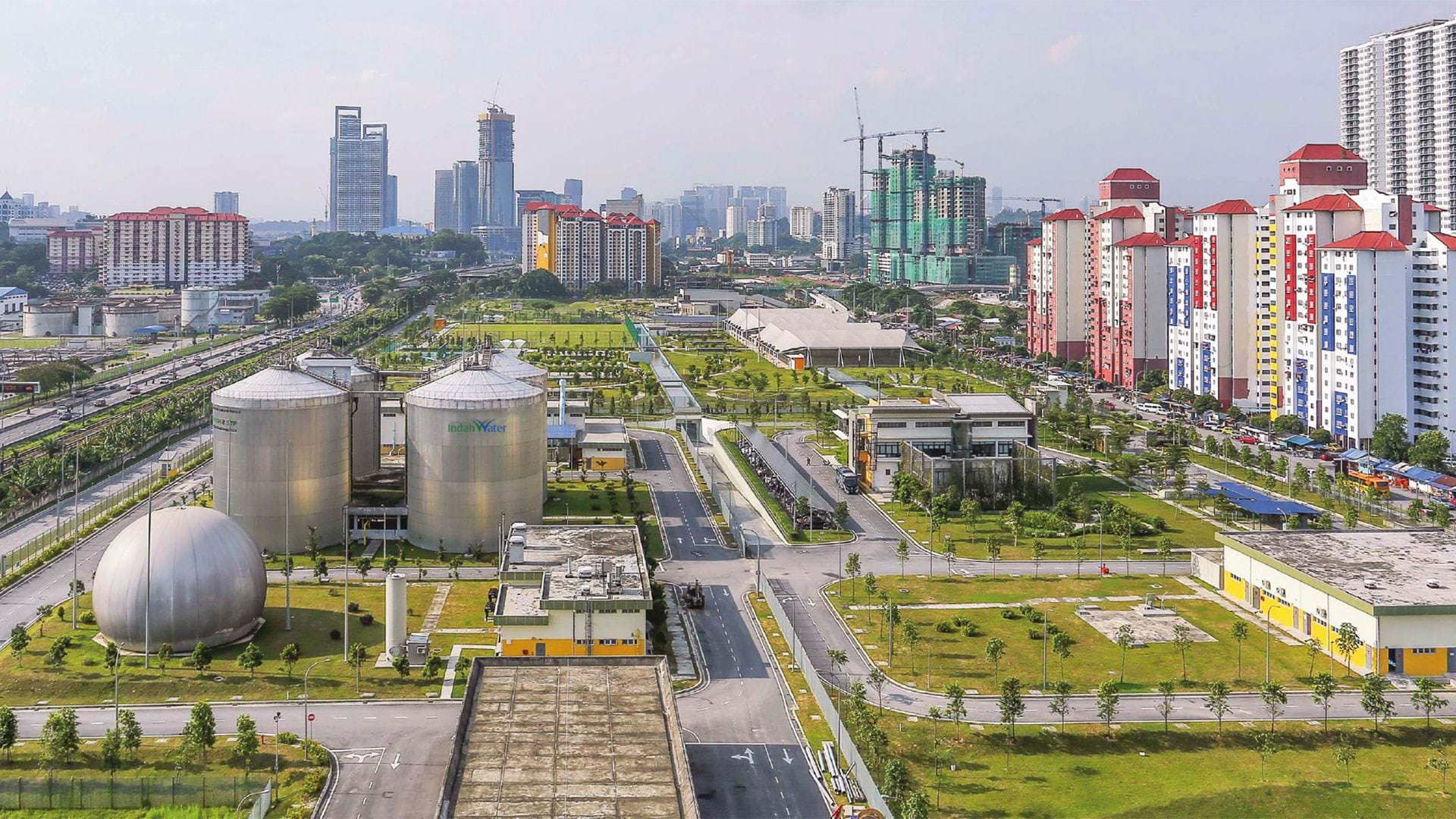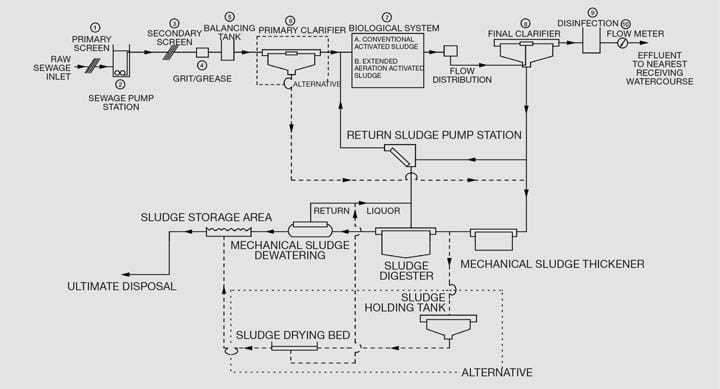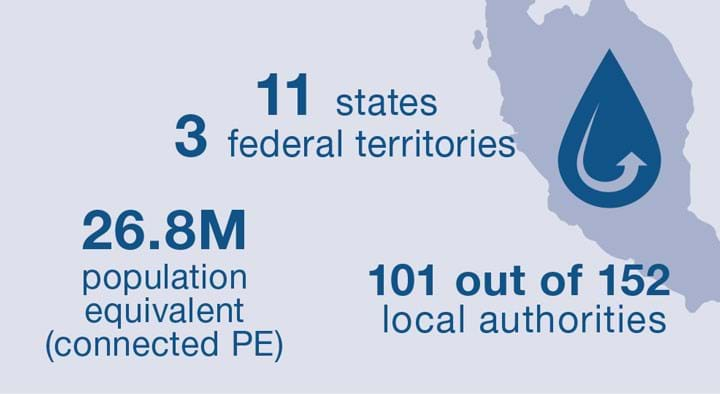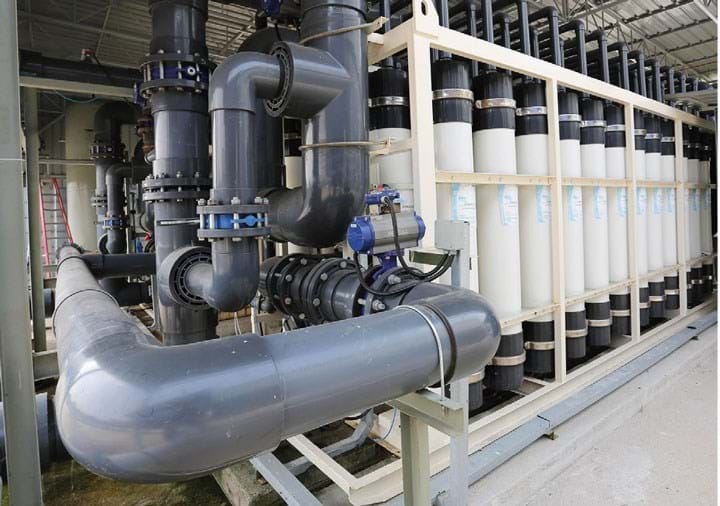From Wastewater to Resource
Khor Bee Chin discusses plans to reclaim precious resources from the wastewater that goes down the drains in Malaysia
ANSWERING “the call of nature” is one thing that everyone must do, yet I’d bet most people don’t give a second thought about what happens with the “byproduct”. And after joining a consulting firm as a “sewerage engineer” in 1994, I realised that it is not as simple as flush-and-go. Sewage treatment involves a lot of science and engineering hard work. In 1999 I joined Indah Water Konsortium (IWK), and since then my career path seems inseparable from this “byproduct”. In this article I’ll discuss engineering specific to the Malaysia sector and the plans underway to get more from this literal waste resource.
The situation today
First let me describe how sewage is currently treated at our sewage treatment plants (STPs). By sewage, we mean wastewater from toilets, commonly known as “black water”, and from bathrooms and kitchens, typically known as “grey water” or sullage. The sewage is collected and conveyed to a STP for treatment to meet the discharge standard stipulated by the Environmental Quality (Sewage) Regulations 2009. In Malaysia the sewage system does not contain rainwater from gutters, surface runoff, stormwater or industrial wastewater.

A typical IWK STP comprises: screens, grit and grease removal, biological tank, clarifier, sludge thickening and dewatering (onsite or offsite) – see Figure 1. Activated sludge systems are the most common biological systems adopted. An activated sludge system is engineered to accelerate the natural decaying process to remove the pollutants from the wastewater by activating and maintaining a culture of naturally-occurring microorganisms in the biological tank. After the biological treatment, the clear liquid and suspended solids are separated through a sedimentation process in a clarifier. The treated effluent, commonly known as bioeffluent, is discharged into the receiving watercourse. Some of the sediment in the clarifier contains activated and dead microorganism, which is recycled to the biological system while the remainder is removed as excess sludge. The excess sludge is further treated at onsite or offsite sludge handling processes prior to final disposal at landfill.

IWK’s core business is to operate and maintain public sewerage facilities in major parts of Peninsular Malaysia (also known as Western Malaysia) – see Figure 2. As of February 2021, we operate 7,071 public STPs of varying capacities, serving about 26m population equivalent (PE) to process around 6m m3/d of sewage. (1 PE is equivalent to a design sewage flow of 0.225 m3/d.)
We have planned our operations to align with the Green Technology Masterplan Malaysia 2017-2030 (“GTMP”), the aspiration by Malaysia’s Government to reduce greenhouse gas (GHG) emissions of gross domestic product up to 45% by 2030 relative to 2005 levels. Two of the GTMP initiatives that directly affect IWK’s operating activities are the target of one-third of the treated effluent to be reclaimed as alternative non-
potable water; and all of the biosolids to be recycled or reused. Currently, the rate of reuse is just 2%, despite our efforts.

Research and development opportunities
IWK has been actively involved in research and development on potential reuse and recycle of STP byproducts. I’ll share some of the initiatives and results achieved to date.
BIOEFFLUENT REUSE AND RECYCLE
Bioeffluent is a valuable alternative source for non-potable water, especially in the urban setting where clean water resource is scarce while demand is high. Irrigating landscaping and horticulture plants with bioeffluent have shown impressive plant growth compared to those using piped water. A pilot trial with an ultrafiltration and reverse osmosis system has demonstrated that it is technically viable to produce high-grade industrial water from bioeffluent.
We have also reused bioeffluent in large STPs as internal non-potable water, eg process water, or cooling water for the heat exchanger of a chiller system.
In March 2021, we formed a joint venture with the local water supply company in Selangor State to reclaim and supply up to 7.5m L/d of non-potable water for an industrial customer. This collaboration opens a new chapter for IWK in large-scale water reclamation from bioeffluent. The process adopted at the water reclamation plant (WRP) at Setia Alam STP comprises ultrafiltration (UF) modules (see Figure 3), followed by reverse osmosis (RO). I learnt that careful design of pretreatment is important to protect the membrane from premature failure. In addition, it is vital to select a membrane system that is suitable to handle bioeffluent with lower biofouling as well as the ability to handle relatively higher turbidity. Flow analysis of bioeffluent is crucial to ensure sufficient capacity, since bioeffluent flow patterns are influenced by diurnal and seasonal effects. The WRP design must include necessary redundancy and a backup plan to mitigate operational risk to avoid disruption of supply.

BIOSOLIDS REUSE AND RECYCLE
About 120,000 t of biosolids were generated from IWK STPs in 2019. The biosolids generation rate is anticipated to increase in tandem with increasing population equivalent growth.
Biosolids have potential as biofertilisers; solid fuel leveraging on the good fuel properties with heating value of biosolids from 15,000 kJ/kg to 19,000 kJ/kg; and as industrial product, such as brick and paving blocks. Biosolids are rich in organic matter and contain reasonable amounts of nitrogen (N), phosphorus (P), potassium (K), trace minerals, and micro nutrients. These compositions make biosolids a potential media for soil conditioner, compost and fertiliser.
Impressive growth on various types of trees and plants – eg rubber trees, horticulture plants, and forestry trees – has been observed. Soil fertility has improved, while the resulting heavy metals in the soil were found within acceptable limits at the time of research. Recently, IWK collaborated with one urban farming non-governmental organisation to conduct a pre-commercialisation pilot project to produce 10 t/d of biopellets from biosoilds as fertiliser for non-food plants. The pilot plant is expected to be commissioned in the first half of 2022. The pilot plant processes comprise drying, grinding, blending, pelletising and packaging. The drying process aims to reduce the moisture content of the biosolids from 85% to about 20% or lower. This is energy intensive due to the loss of latent heat through water evaporation. The ability to reduce the energy required for the drying process will improve the cost efficiency of the process. We will add organic base additives with the biosolids to improve the N:P:K value for better fertilising effects. Then the mixture will be pelletised to produce slow-release biofertiliser. Maintaining consistent quality of the biopellets is crucial since the biosolids characteristic will be influenced by the sewage characteristics.
BIOGAS
Biogas is the byproduct from the biosolids anaerobic digestion process. Only a handful of large IWK STPs (eg Pantai 2 Regional STP, or “P2 RSTP”) are equipped with anaerobic digesters.
P2 RSTP, located at Pantai Dalam, about 13 km from the centre of Kuala Lumpur, is designed to serve 1.423m PE (see leading photo). It is the biggest STP that IWK operates and maintains.
The sludge is treated in the anaerobic digesters to reduce the volatile solids for more stable sludge prior to disposal. In 2020, an average 2,000 Nm3/d of biogas was produced from the anaerobic digestion process. The biogas contains about 55% V/V% methane, carbon dioxide with trace amounts of nitrogen gas, oxygen gas, and hydrogen sulfide. The biogas has been recovered to produce about 1,300 MWh electricity through an onsite biogas engine, supplementing about 10% of annual energy demand of the RSTP for the year. We received the Asean Energy Award 2020 for our renewable energy recovery efforts. Currently, the P2 RSTP is operating at about 60% volumetric loading, ie the potential renewable energy is projected to increase in future. P2 RSTP demonstrates the feasibility of biogas recovery at a large STP.
Recent Editions
Catch up on the latest news, views and jobs from The Chemical Engineer. Below are the four latest issues. View a wider selection of the archive from within the Magazine section of this site.




